Manufacturing (excludes F&B), Government, Sustainability:
On this page
Summary
- To meet its legislated 2030 and 2050 greenhouse gas emission reduction targets, the European Union (EU) has imposed an emissions trading scheme (ETS) on certain emissions intensive goods, among other emissions reduction measures.
- To ensure EU producers have a ‘level playing field’ with producers outside the EU, and to address the risk of carbon leakage(external link), the EU will introduce a Carbon Border Adjustment Mechanism (CBAM). The CBAM will be fully implemented from 1 January 2026.
- The CBAM has been in a transitional phase since October 2023. From 1 January 2026, relevant EU importers will need to buy and surrender CBAM certificates to EU authorities i.e. pay a levy.
- When fully implemented the CBAM will apply a carbon levy on specified materials and goods produced outside the EU in the cement, iron and steel, aluminium, fertilisers, hydrogen, and electricity sectors upon import into the EU. In theory, this will enable the same carbon price to be applied to CBAM goods across the EU market, irrespective of where they are produced.
- The levy will take into account any carbon price already paid in a third country, such as under the New Zealand Emissions Trading Scheme.
- So far importers of CBAM goods into the EU (declarants) have been required to submit quarterly reports using a range of methodologies. However, between now and 1 January 2026, the rules and obligations for reporting will continue to evolve.
- With existing experience under the New Zealand ETS, and a limited products covered by the CBAM’s current New Zealand’s export profile to the EU, New Zealand producers and exporters should be comparatively well-placed to meet the CBAM’s requirements.
- That said, the EU is already conducting research into possible expansion of the CBAM’s scope to include transport, and also to certain downstream products.
- As a first port of call, potentially impacted New Zealand exporters should consult DG TAXUD’s website(external link) which contains a wide range of resources including:
- A self-assessment tool(external link) for potential CBAM participants;
- A dedicated learning portal(external link) for declarants and authorities;
- Regularly updated FAQs(external link);
- Sectoral information including webinar recordings on the rules, implications, and reporting requirements for importers, exporters and producers of in-scope products from the EU and third countries.
- NZTE has developed guidance for New Zealand exporters of emissions-intensive products to the EU(external link).
Report
The CBAM applies a carbon levy to imports of certain carbon intensive goods, in sectors which are considered at risk of carbon leakage (i.e. the offshoring of production to countries with laxer emission constraints). Imports of these goods are captured where the shipment value is equal to or greater than €150 (which is also the EU customs declaration threshold).
Since its entry into force on 1 October 2023, the CBAM has been in a transitional period, allowing time for relevant businesses to upskill on how to comply. Once fully implemented from 1 January 2026, the CBAM’s scope will cover more than 50% of the emissions in sectors covered by the EU Emissions Trading System.
Transitional phase – Stage one
Between now and 1 January 2026, importers of CBAM goods (CBAM declarants) must report embedded carbon emissions (direct and indirect) (1) without the need to buy and surrender CBAM certificates i.e. pay a levy. (2) Declarants report into a transitional registry on a quarterly basis (3) and are currently able to do so using: (a) the EU’s reporting methodology or (b) an equivalent method e.g. existing reporting under the New Zealand ETS. Declarants have also been able to report emissions based on default reference values, though this was only possible until July of 2024.
In assessing quarterly reports, the European Commission is focussed on: detecting and identifying missing and/or incorrect reports; ensuring data accuracy and completeness; and preventing further issues. So far over 70,000 compliance reports have been received and assessed, coming principally from four main industrial sectors: iron & steel (69%), fertilisers (17%), cement (9%), and aluminium (5%).
Transitional phase – Stage two
On 1 January 2025, the EU introduced several changes to the interim reporting system. Firstly, only the EU methodology for reporting emissions will now be accepted. This means New Zealand exporters which have been relying on their New Zealand ETS reporting as an equivalent method are no longer be able to do so. For complex goods (i.e. goods which have been made using raw materials that are subject to the CBAM themselves), using emissions estimates (including default values(external link)) will only be possible if they account for less than 20% of the total embedded emissions considering the entire production chain. (4)
Secondly, a new voluntary portal(external link) for producers of CBAM goods in third countries has been launched. Under the portal, producers in third countries like New Zealand will be able to apply to register and upload their business and wider emissions information, including reporting a carbon price already paid (e.g. under the EU-NZ ETS). The portal aims to ease the compliance burden on CBAM declarants (who will not need to individually seek out producers for data) and producers (who will not need to field excessive requests from their downstream customers). (5)
Finally, CBAM declarants will be able to apply to be an ‘authorised CBAM declarant’ via the CBAM Registry. To date, access to the registry has been dependent on declarants receiving approval from National Competent Authorities (NCAs) of EU Member States directly. While applications via the CBAM Registry will be processed by NCAs, once approved, their declarant status will become mandatory as of 1 January 2026.
2026 onwards – Definitive regime
When CBAM enters the ‘definitive regime’ (from 1 January 2026), authorised CBAM declarants must submit annual CBAM reports and purchase/surrender CBAM certificates through EU Member State NCAs. The price of the certificates will be calculated depending on the weekly average auction price of EU ETS allowances expressed in €/tonne of CO2 emitted, though a credit will also be available for carbon taxes paid in the local jurisdiction of production of the CBAM goods.
In their annual CBAM reports, importers will detail the emissions embedded in their CBAM goods and surrender the corresponding number of certificates each year. Reporting of embedded emissions will be limited to direct emissions for iron/steel, aluminium, and hydrogen. Importers of cement and fertilisers will have to declare both direct and indirect emissions. These embedded emissions must be independently verified by an accredited body.
In cases where actual emissions data is not available, CBAM declarants will be able to use default values, without quantitative limits. However, default emissions will be subject to a price mark-up, as a means of incentivising the collection and use of actual emissions. A European Commission study is currently underway to determine what the mark-up should be, alongside a re-assessment of emission intensities for a proportion of the most carbon intensive EU ETS installations.
| Key impacts of the different CBAM implementation phases | |
|---|---|
|
Transitional Period – Phase One October 2023 – December 2024 |
|
|
|
|
Transitional Period – Phase Two January – December 2025 |
|
|
Definitive Period January 2026 - onwards |
|
Implications for New Zealand exporters
Businesses exporting CBAM goods (particularly complex goods) are encouraged to continue to use the remaining time in the transitional phase to prepare for the CBAM entering its definitive phase from 1 January 2026. In the medium term, relevant businesses and exporters will need to ensure that they consider the EU’s methodology in calculating and reporting emissions, now mandatory for reporting. The EU will continue to work with CBAM declarants where transitional quarterly reports are incorrectly produced and will continue using the information it receives through these reports to fine-tune the CBAM’s ongoing implementation.
Businesses should also be aware that the EU will carry out a review of its CBAM rules over the next year. This includes studies into extending the scope of CBAM to transport and on the feasibility of including other goods covered by the EU ETS, such as certain downstream products. When completed, a report will include a timetable setting out their inclusion by 2030.
Despite the additional reporting burden and eventual financial cost attached to the CBAM, New Zealand-based producers of CBAM goods that invest in complying with the EU’s reporting methodology will ultimately be at a competitive advantage relative to other non-EU producers who cannot provide this to CBAM declarants. This is especially true for low-emissions producers of these goods which in theory will present the most cost-efficient option for EU importers from 2026 onwards.
(1) Direct emissions cover the emissions generated during the production processes of CBAM goods, including from the production of heating and cooling, irrespective of the location of the production of the heating and cooling. Indirect emissions cover the production of electricity that is consumed during the production of CBAM goods.
(2) Indirect emissions will be covered in the scope only after the transitional period for some sectors (cement and fertilisers).
(3) Provided the EU importer has applied to the National Competent Authority of the EU member state they are located in.
(4) This limitation has already been in place since 1 July 2024 and will run until the end of the transitional period on 31 December 2025.
(5) Training resources including video guidance, IT manuals, and business guides are available online.
More reports
View full list of market reports
If you would like to request a topic for reporting please email exports@mfat.net
Sign up for email alerts
To get email alerts when new reports are published, go to our subscription page(external link)
Learn more about exporting to this market
New Zealand Trade & Enterprise’s comprehensive market guides(external link) export regulations, business culture, market-entry strategies and more.
Disclaimer
This information released in this report aligns with the provisions of the Official Information Act 1982. The opinions and analysis expressed in this report are the author’s own and do not necessarily reflect the views or official policy position of the New Zealand Government. The Ministry of Foreign Affairs and Trade and the New Zealand Government take no responsibility for the accuracy of this report.
Copyright
Crown copyright ©. Website copyright statement is licensed under the Creative Commons Attribution 4.0 International licence(external link). In essence, you are free to copy, distribute and adapt the work, as long as you attribute the work to the Crown and abide by the other licence terms.

